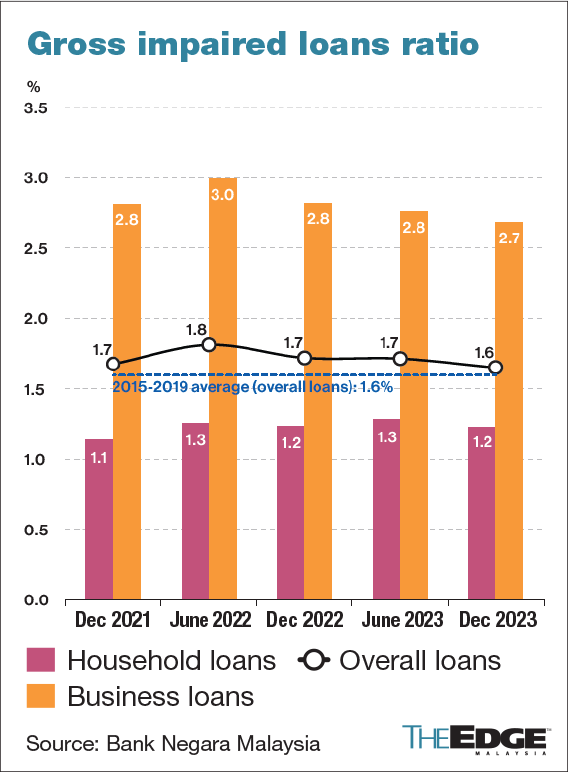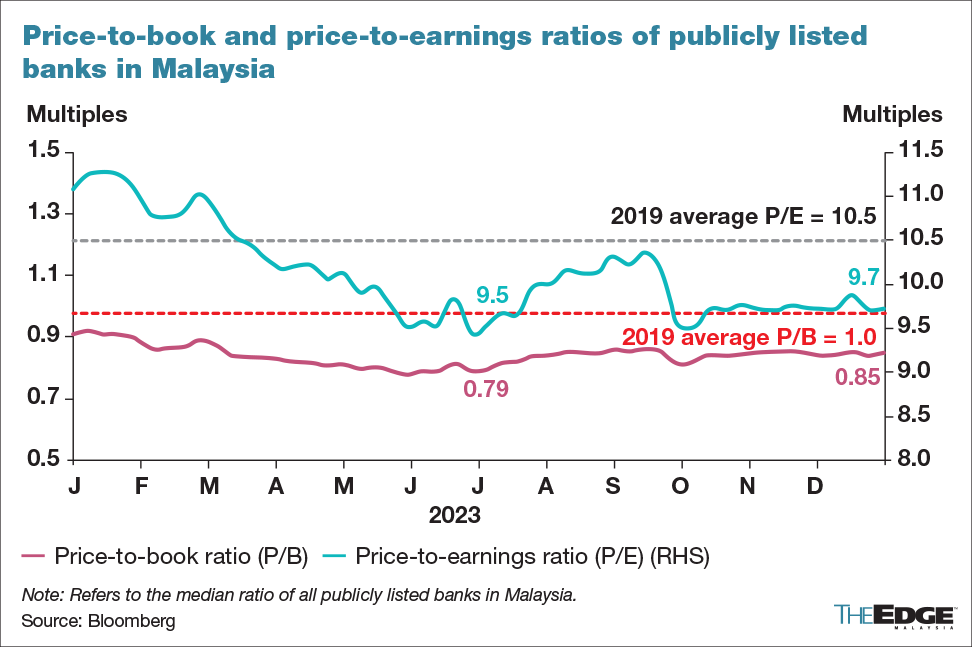
KUALA LUMPUR (March 20): Malaysian banks remain well-capitalised to absorb unexpected shocks and support financial intermediation in the economy, according to Bank Negara Malaysia.
This is based on the banking system’s total capital ratio of 18.5% and capital buffers in excess of the regulatory minimum at RM142.6 billion as at end-December 2023, it said in its Financial Stability Review — Second Half 2023, released on Wednesday.
Liquidity and funding positions of the banking system remained strong, with aggregate liquidity coverage ratio at 160.9% and net stable funding ratio at 118.2%, both well above regulatory minima, it said.
Hence, the banking system remained resilient against liquidity shocks, as the large buffers continued to preserve banks’ capacity to support credit to the economy and absorb unexpected losses.
They also enabled banks to sustain dividend payouts, which have largely returned to payout ratios observed before the pandemic for most banks.
Deposits continued to grow
Deposits in the banking system, meanwhile, continued to grow — in line with improvements in business activities and household incomes.
Resident individual and business deposits, which accounted for 35.6% and 34.1% of the bulk of the banking system, continued to provide a stable source of funding for banks, amid lower deposits of non-bank financial institutions and the government.
“As the need for precautionary cash buffers subsides, the ongoing shifts observed from current and savings (casa) deposits to longer-term fixed deposits will continue to underpin the stability of banks’ funding sources,” it said.
Banks’ asset quality also continued to improve in the second half of 2023, BNM noted.
The share of loans classified under Stage 2 continued to decline to 7.2% of total banking system loans, while total loans under repayment assistance programmes dropped to 2.4% of total banking system loans from 2.5%, amid a steady recovery in borrowers’ repayment capacity.
The banking system’s loan loss coverage ratio was correspondingly sustained at a high level of 119%, as compared to 118.6% in June 2023, as banks continued to be vigilant. While annualised credit costs remained slightly elevated compared to pre-pandemic levels, they have declined significantly from earlier peaks.
“Moving forward, banks expect a modest increase in impairments as repayment assistance programmes are progressively reviewed,” said BNM.
Banks’ earnings moderated amid narrowing interest margins
However, banks’ earnings have declined year-on-year and were lower relative to the first half of 2023, amid continued compression in interest margins due to higher funding costs.
In line with the lower earnings, returns on assets of the banking system dropped to 1.2% in December 2023, from 1.3% in June 2023, while returns on equity declined to 11.2% from 11.6%.
Market valuations of listed banks remain below their pre-pandemic average levels, based on their price-to-book and price-to-earnings ratios, reflecting prevailing credit and economic conditions.
Nevertheless, thanks to a drop in domestic bond yields, banks managed to see a slight improvement in trading and investment income to RM6.3 billion in 2H2023, from RM6.1 billion in 1H2023.
While banks’ holdings of government bonds increased marginally to 10.3% in December 2023 from 10.1% in June 2023, their exposure to interest rate risk remains manageable.
“Potential revaluation gains could provide further support to banks’ capital positions, should yields decline going forward,” said BNM.
The central bank expects an improving economic outlook, coupled with the banks’ relatively strong position to capitalise on growth opportunities, to provide sustained support for their profitability.
Don't miss the other highlights of the BNM Annual Report 2023. Read the articles here.



